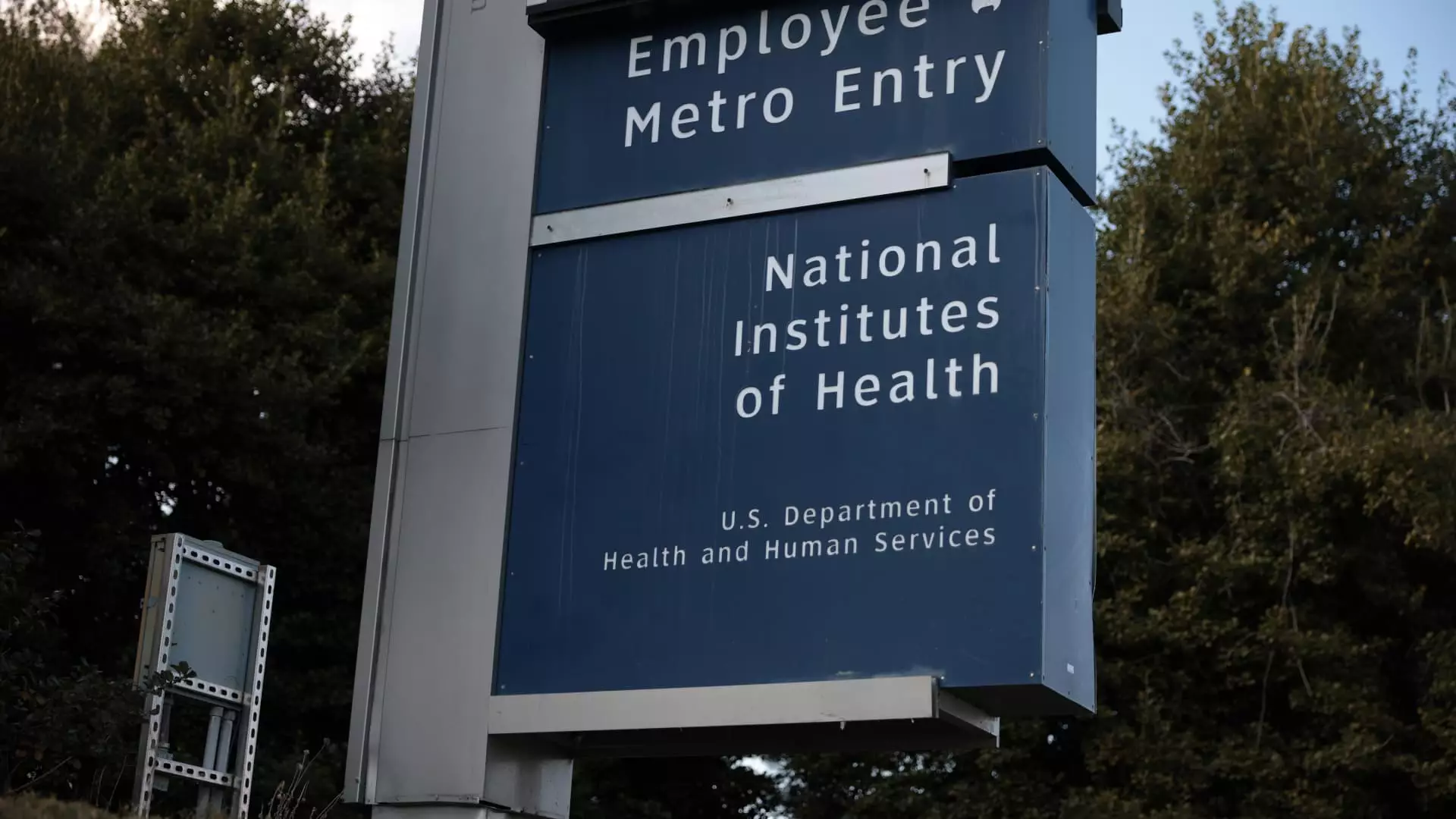The recent decision by the Trump administration to limit indirect costs in National Institutes of Health (NIH) grants is not just a fiscal maneuver; it is a potentially catastrophic blow to the future of scientific research in America. Capping these costs at a mere 15% is a drastic departure from the historical average, which hovers between 27% and 28%. Industries, researchers, and educational institutions rely on these essential funds to maintain their operational integrity. By cutting expected resources, this initiative risks jeopardizing decades of advancements in biomedical and behavioral research.
The NIH is not just an acronym; it embodies a lifeline for discovery and innovation. With a budget of over $47 billion, it is the world’s leading public funder of research. The proposed $4 billion reduction can hardly be viewed as mere budgetary reallocation; it’s a signal that the government may be turning a blind eye to the complexities that underpin scientific investigation and revolutionary breakthroughs.
Market Ramifications: Investors Are Taking Notice
Financial markets are already responding to these daunting uncertainties. Life science tool companies, which epitomize a sector previously seen as a stable investment, now find themselves in choppy waters. Notably, while the broader S&P 500 has seen a minor decline of 4% over the past month, specific companies like Bruker and Illumina have experienced plummeting stock prices—14% and 10.8%, respectively. Investors are clearly alarmed by the prospect of future profitability being dampened by funding cuts.
Bank of America analysts have sounded the alarm, emphasizing that about 60% of U.S. academic research funding originates from federal agencies like the NIH. This makes it abundantly clear that capping indirect costs isn’t just an academia issue; it’s a potential harbinger of economic distress in the life sciences sector. The sentiment on Wall Street is teetering between skepticism and concern, presenting a complex challenge for investors who have championed this sector as a bastion of reliable long-term growth.
Scientific Progress Stalled: The Human Impact
But monetary concerns pale in comparison to the far-reaching implications these funding cuts could have on societal well-being. As these caps threaten the operational viability of many research institutions, the human cost becomes alarmingly apparent. Researchers, like Tara LeGates from the University of Maryland, have articulated the dire consequences of inadequate funding on their capacity to conduct meaningful investigations. If basic operational needs such as lighting and staffing become unsustainable, every ambitious proposal can swiftly dissolve into nothingness.
The fallout could be even more profound if universities are forced to reconsider their hiring strategies, leading to hiring and admissions freezes. Imagine a scenario where brilliant minds are sidestepped by the very institutions that exist to nurture them. This is not just a funding issue; it’s a grave ethical dilemma that risks stifling the growth of future innovators who might otherwise have contributed significant advances.
Long-Term Threats to American Preeminence in Research
The implications of these cuts extend beyond immediate financial concerns; they have unprecedented long-term effects on America’s standing in global scientific research. Puneet Souda’s comments on the potential risks to drug discovery evoke a chilling prospect: a future where America relinquishes its leadership role in cutting-edge scientific innovation.
If this policy trickles down and institutions cannot pay personnel or maintain research facilities, decades of progress could be at stake. Battlegrounds for new drug development would likely shift to other nations with more robust funding structures. The scientific community could endure a significant loss in knowledge production, impacting not only academic life but, more critically, public health outcomes across the globe.
Perhaps the starkest takeaway from this crisis is the urgent need for collective action from stakeholders at every level. Policymakers must recognize that scientific research is not simply an expense but an investment in humanity’s future. The funding cuts reflect shortsightedness that has real, substantive repercussions. If these ramifications go unchecked, they could eclipse not only the financial landscape but also the very fabric of knowledge and innovation that defines our society.
In this climate of uncertainty, it is paramount for investors, researchers, and policymakers alike to rally against underfunding. Our commitment to science should be unwavering because when we invest in research, we’re not merely contributing to the economy—we’re ensuring a healthier, brighter future for generations to come.


Leave a Reply